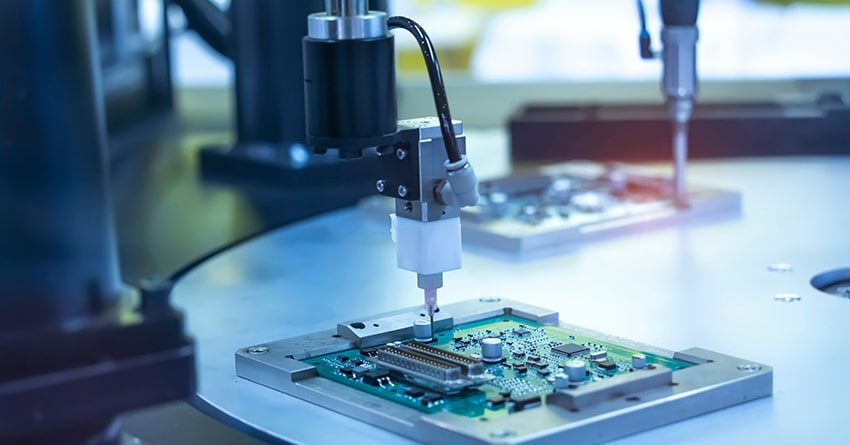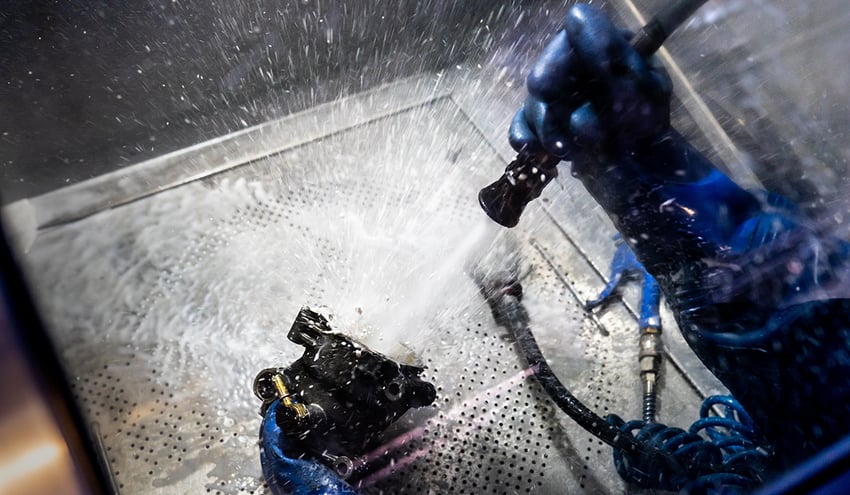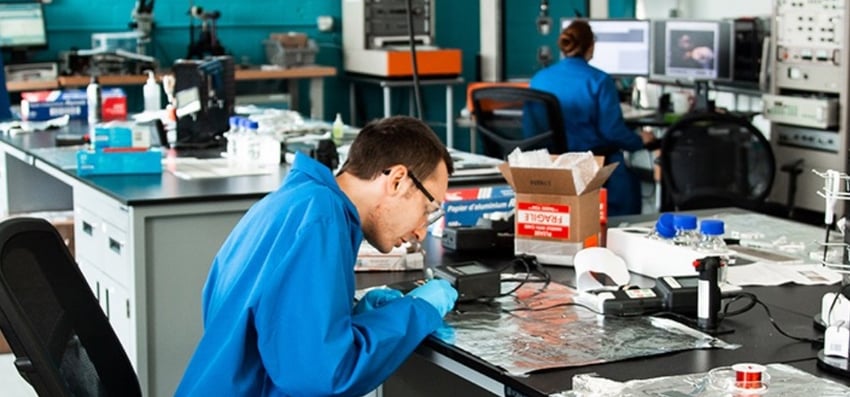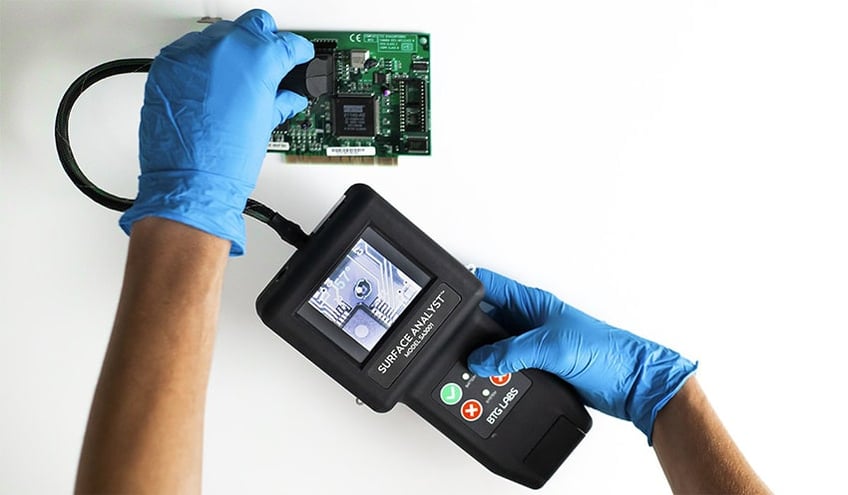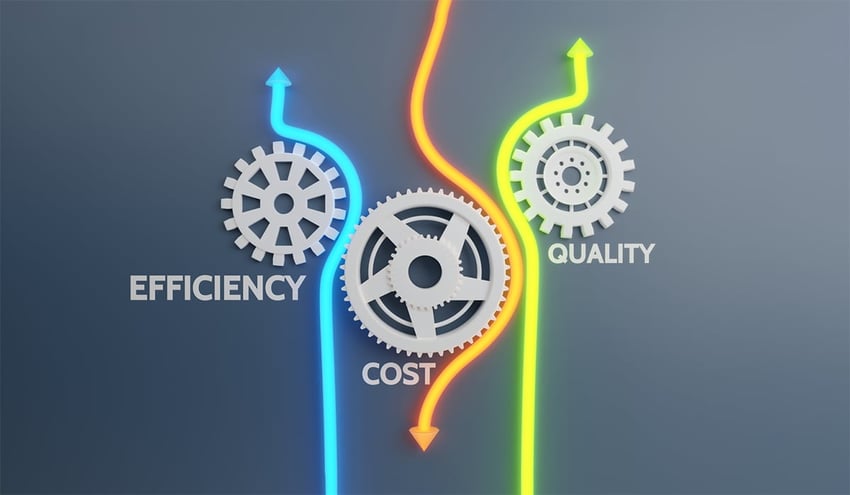When development teams are looking to build a new product that includes a coating, bonding, painting, or sealing process, it's only natural to consider what kind of adhesive, coating, or paint will perform the best. While these selections are critical to the end product's success, development teams must also pay attention to surface chemistry.
What is surface chemistry, and why is it important?
Surface chemistry is the study of chemical reactions at the surfaces and interfaces between two materials. It is everywhere in industrial settings and is especially prevalent in the designing and building of products in the manufacturing industry.
Surface chemistry is integral in this line of work. If you work with a material to make a part or are gluing, painting, coating, or molding, you are directly dealing with surface chemistry. Surface chemistry defines how easy or difficult it is to manufacture or assemble a product, the final material properties, performance, and what the finished product will look like.
Adhesion & Material Selection
Product development or R&D teams often spend most of their research considering different adhesive types. After all, when you hear about a product failure, it's typically because of an “adhesive failure.” Unfortunately, this doesn’t tell the whole story.
While choosing a suitable adhesive or coating is essential, it is even more critical for the engineers involved with the design process to focus on the material surface with which the adhesive will bond.
The surface that an adhesive or coating is applied to must be clean and well-suited to the adhesive.
Poor surface preparation and residual contamination on the surface are the actual leading causes of bonding failure, not the adhesive.
Surface Chemistry is Key to Product and Process Selection
When launching a new product, most companies take great care and consideration of the materials used. Everything from the product's color to how it looks in the package to how it feels in the customer's hand is discussed and debated.
So, why isn’t surface chemistry a standard input discussed during this stage?
To thoroughly assess risk, development teams must consider surface chemistry during the FMEA or DFMEA. By adding surface chemistry as an input, they will gain a complete picture of how their material system (components, adhesives, and other selected materials) will work alongside the chosen adhesive, coating, or paint. As a result, they will determine the product's overall quality.
Rethink your adhesion manufacturing processes with Surface Intelligence.
Setting Benchmarks for the New Product Development Project
Setting benchmarks throughout the manufacturing process is key to ensuring a quality product and is the first step to implementing process control.
The easiest way to test if benchmarks are being met is to measure surface quality at each step. These measurements will allow the manufacturing team to know immediately if and when a problem occurs in the process.
However, these benchmarks must be determined at the beginning of development. Early development of these benchmarks gives the manufacturing team clear quality standards that ensure each product meets specifications as it leaves the factory floor.
When Adhesion Failures Occur, Surface Measurements Enable Faster Resolution
Establishing testable and repeatable benchmarks means that if an adhesion failure does occur, it will be much quicker and simpler to identify the source of the problem. By establishing these standards, the variable of surface quality can be removed, and time can be spent looking elsewhere.
In other words, having surface quality standards enables manufacturers to troubleshoot manufacturing issues more effectively. Surface measurements help diagnose problems and more rapidly correct them.
You Can't Properly Manage Your Supply Chain Without Surface Quality Specifications
Once a company has ensured the total quality of every part of its product, it becomes easier to manage its supply chain. Having a clear set of benchmarks will lead to a much more simplified product testing method, and as a result, every component and every step of the manufacturing process will be defined clearly.
If a component or material becomes unavailable, having this system set up and already in place will make finding a replacement much more manageable. New products and materials can be easily swapped out in the manufacturing process, and tests can be performed at each step during and after the replacement to ensure that the finished product continues to meet the established benchmarks.
Optimize the power of next-gen connectivity with data & surface intelligence.
Suppose the incoming products or materials fail the surface quality checks. In this case, the manufacturer has the tools and data to communicate the nonconformity effectively. The solution could be that the supplier needs a quality check at their location before shipment, the supplier’s cleaning or preparation processes are drifting out of spec, or the manufacturer may simply need to find another supplier to provide the quality they need.
By establishing benchmarks and testing for surface quality at every step of the manufacturing process, a company can ensure the overall quality of its finished product and can quickly respond to changes in the supply chain. The result will be a manufacturing facility that can run more efficiently and quickly adapt to market changes, giving it an edge over its competitors.
Learn how to correctly implement a surface chemistry input by reading the eBook "Seeing the Unseen: How Surface Quality Data Enhances Risk Prediction in FMEA."




